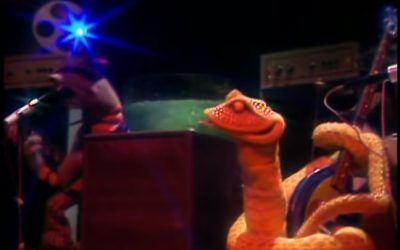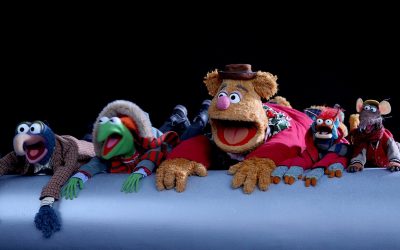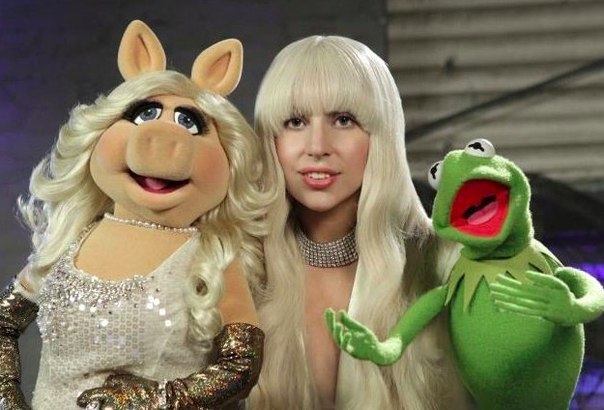Part 1 – Part 2 – Part 3 – Part 4 – Part 5
Welcome back to My Week with Muppet Covers! Since I’m spending this week writing about Muppets covering other artists and other artists covering Muppets, I wanted to cover (ha!) both sides of that coin in this article. The trouble is, I’m really pressed for time, and trying to squeeze these writings into my morning drive hasn’t been going well. I’ve decided the smarter way to multitask is to write about the one song that has probably been the basis of most Muppet covers in both ways: “Mah Na Mah Na.”
We’ve written about this article a few times before, but we haven’t fully explored the curious status of “Mah Na Mah Na” as one of the signature Muppet songs… even though it wasn’t originally a Muppet song. Every time the Muppets perform it, that’s a cover! When someone else records it, it’s probably best understood as a cover of The Muppets. That’s weird, right? And we specifically associate the song with its performance on The Muppet Show, which aired before anybody was watching that show. That’s weirder, right? How did people see this sketch?
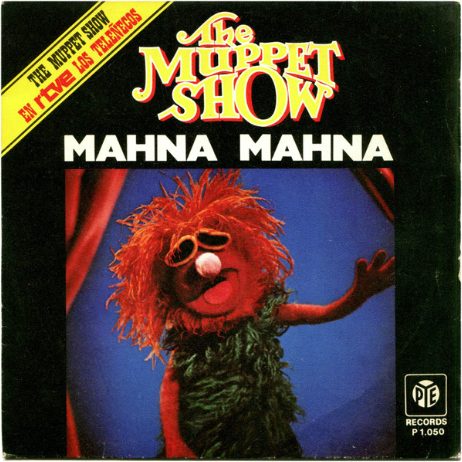
Exceptions to this are the recordings from before The Muppets got ahold of it, and there’s actually a bunch of those. I won’t list them here since they’re pretty similar to the original recording by Piero Umiliani, but a heck of a lot of artists thought it would be fun to record this song for some reason, including music legend Giorgio Moroder. That might seem strange, but it won’t by the end of this article.
In case you haven’t read his Twitter thread or heard about it on the radio, I’ll inform you that Brian Jay Jones recently determined where and when Jim Henson first heard “Mah Na Mah Na”. The mystery is solved! Finally, we can forget Wikipedia’s claim that Joan Ganz Cooney recommended the song to Jim after hearing it on the radio. …But what about Deb Spinney’s claim that Caroll recommended it to Jim? She would know if that was true, wouldn’t she?
Well, what if I told you that they could all be true?
Don’t get me wrong, Brian’s probably got it right. He tends to be right about things, and his detective work is solid, and he heard the gist of this story straight from the Frank Oz’s mouth. Nevertheless, Jim may have also heard about the song from multiple colleagues. You see, the amazing thing about “Mah Na Mah Na” is that it did not merely exist before The Muppets recorded it… it was actually becoming somewhat famous. It was an entity in the cultural zeitgeist that The Muppets would somehow Muppropriate as their own while it was already at the height of its popularity.
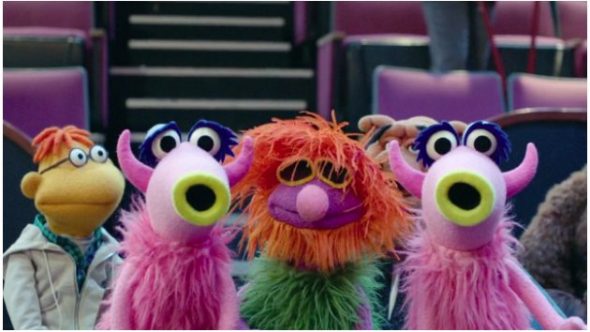
I’ll assume you already know by now that the song was written for Sweden: Heaven and Hell, a 1968 Italian mondo film. I tried to watch it in preparation for this article, which was a terrible idea since people get arrested for that every day, but I couldn’t stand watching it for more than a few minutes. It stinks! Nevertheless, I have to respect what it was trying to do: finally, someone was making a documentary about youth culture in 1968!
What happened next is even weirder to me, and I don’t know how to explain it. Perhaps everyone in America followed Jim and Frank to that one theater in New York where they saw this film, but I wouldn’t bet on it. Nevertheless, this track peaked at No. 44 on the Cash Box chart about a year after its release, and No. 55 on the Billboard Hot 100 singles chart. It’s true! It probably has something to do with The Red Skelton Show using the song for its cold opens around this time, which were extremely weird.
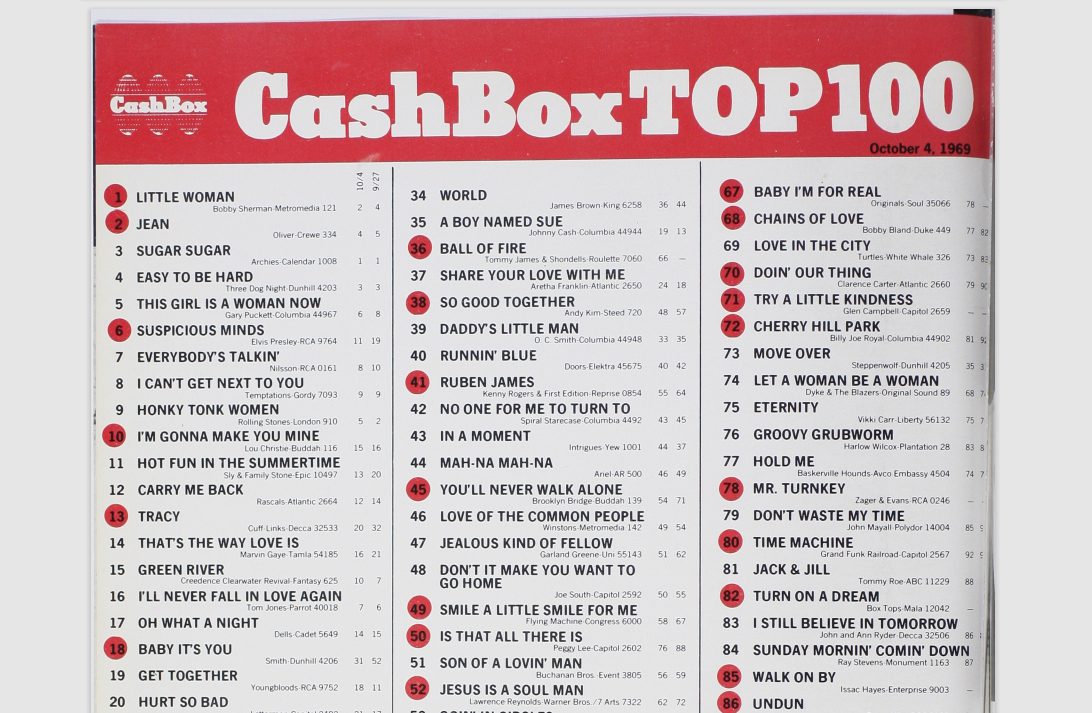
Regardless, this song was having a moment. This means that when The Muppets first used “Mah Na Mah Na” in late 1969, they were part of a trend that was kind of going viral. Just imagine The Snowths dabbing and eating Tide Pods in 2017, or better yet, don’t!
My point, if I must have one, is that it’s truly impressive how The Muppets were able to claim this song as their own. They successfully scrubbed any other memory of this tune from our collective consciousness and now it is unambiguously theirs, somehow. I believe the reason The Muppets were able to claim this song is how fiercely determined they were to take it.
The Sesame Street version by an early Bip Bippadotta aired only three days before Mahna Mahna and The Snowths performed the number on The Ed Sullivan Show. They made their version kind of inescapable for a week. Then they performed the song three times in 1971, which feels like a brute force attack. By the time they performed it on the first episode of The Muppet Show, it hardly mattered that so few people watched the show initially – I think everyone already knew the song was a Muppet song and just needed the reminder.
The Sesame version keeps the arrangement about the same as Umiliani’s original, but I won’t spend too long describing this bizarre segment since you’ve probably seen it. The Sullivan performance that aired a few days later, however, is more or less the version from The Muppet Show, which is totally different. The rhythm section becomes an instantly recognizable, bouncy beat that bears no resemblance to Umiliani’s monotone samba. Jim spends most of the song shouting like a preacher instead of softly buzzing nasal noises like earlier artists. The Muppets even changed the lyrics in a song that has so few, introducing the famous “Do Dooo Do Do Do”. The middle of the piece, which originally interpolated classical music, has been replaced with “Lullaby of Birdland”. Jim totally gutted this song and filled it with his own thing, leaving very little of the original work intact, and it was all for the better.
The Muppet Show incarnation was the A side on the first single from The Muppet Show, and they haven’t stopped selling it to us since. Today, Muppet recordings of this song have appeared on eleven different albums.
Sesame Workshop, it seems, only took interest in making the song part of their legacy in the ‘90s, and it should be noted that two of its five Sesame album appearances are from within the past five years. It’s a rare thing for a song to be an important part of the legacies of both the Muppet franchise and Sesame Workshop, but each studio tries to convince us that we remember it because of them, not the other studio. Sesame did it once on Play with Me Sesame, twice on Sesamstrasse, and even included it in A Swingin’ Sesame Street Celebration at Lincoln Center.
The Muppets Studio gang can’t escape it, and it honestly doesn’t make much sense. It’s not their song! See, the iconic Muppet Show sketch added the much-needed button of Kermit coming in at the end with the telephone and making a scrunchy face. The scrunchy face should make it clear that Kermit doesn’t particularly like Mahna Mahna. I think Kermit thinks he’s a freak, and none of the other Muppets have any reason to care about this one weirdo’s obsession with aggressive scat. Now, all the Muppets have to act like it’s their anthem, and I find that irritating.
They all sang it in a 2011 Orange commercial, except for Kermit and Piggy, but those two ended up doing the Snowth part together for a Good Morning America appearance. More recently, Miss Piggy performed it for a few seconds on The Masked Singer, and that was weird. It doesn’t suit her character at all, but it’s a Muppet song, she’s a Muppet, and so she has to sing the freaky hippy’s gibberish song. It’s very much like Fozzie having to sing “Rainbow Connection” at Pechoolo Casino. It’s depressing, awkward, and reduces unique characters to nothing more than ambassadors of The Brand.
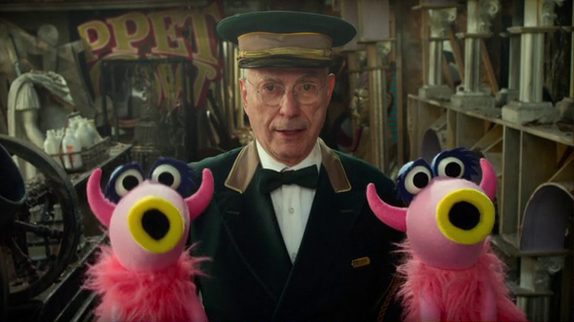
Speaking of The Muppets (2011), the most astonishing example of how this song that decidedly belongs to three specific Muppets has become a signature song for the whole darn studio is when this movie abruptly stops the plot resolution to have all the celebrities who cameoed in the film sing “Mah Na Mah Na”. I assume this was originally written as Gary proposing to Mary and Mary saying, “I do do doo do,” which would then transition into the musical number, but that is not what happens in the movie, so I guess I’ll die mad.
And now, here are my notes on a few artists who have no reason to perform “Mah Na Mah Na” performing “Mah Na Mah Na” as though it’s a Muppet original:
- The Peter Pan Records take in 1970 is an early example of needless forgeries of Muppet songs, of which there are many. Most recent examples of note are available to listen to in iTunes or on Amazon Music, but are not the easiest to link to here. If you really need to hear Little Apple Band’s cover, you’re on your own, but to fuel your nightmares, here’s what one of their albums looks like.
- I like CAKE’s contribution to the 2002 album For the Kids much more than I expected. It feels like they had several ideas for how to approach it and just did all of them, which brings something interesting to a song that can easily be a bore without silly puppets.
- The Fray’s take on this song sounds like the aforementioned Muppet forgeries that you’ll find all over iTunes, and it’s the lowest low point of The Green Album. It stinks!
- Somebody thought this song needed some new lyrics, and I’m not talking about CeeLo Green!
- I absolutely love that Arthur Fiedler got an orchestra to play this song. It’s delightful! He did a few other symphonic interpretations of Muppet songs, including “ABC-DEF-GHI”, so I recommend seeking out his work.
I’ve made a playlist of 19 other interesting takes on the song, which is by no means exhaustive but by all means exhausting. You will hate it. I dare you to listen to it in full. I guess there’s nothing left to say except that the popularity of this song truly is a remarkable… oh, what’s a good word for it? When some strange sensation inexplicably takes the world by storm? Ah, yes, a phJava.
Click here to ask if “Snowth” is supposed to be a portmanteau of “snout” and “mouth” on the ToughPigs forum!
by J.D. Hansel

